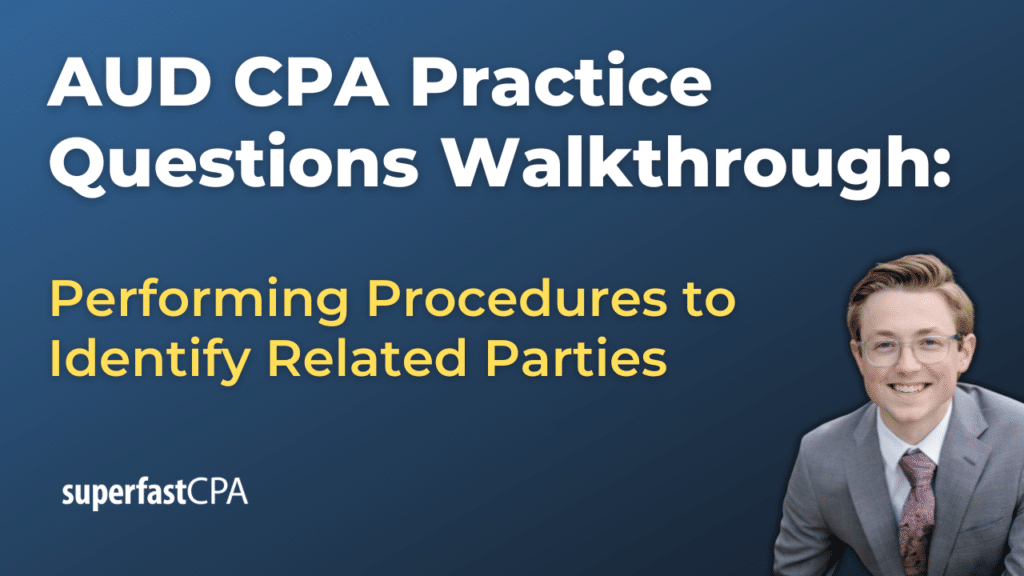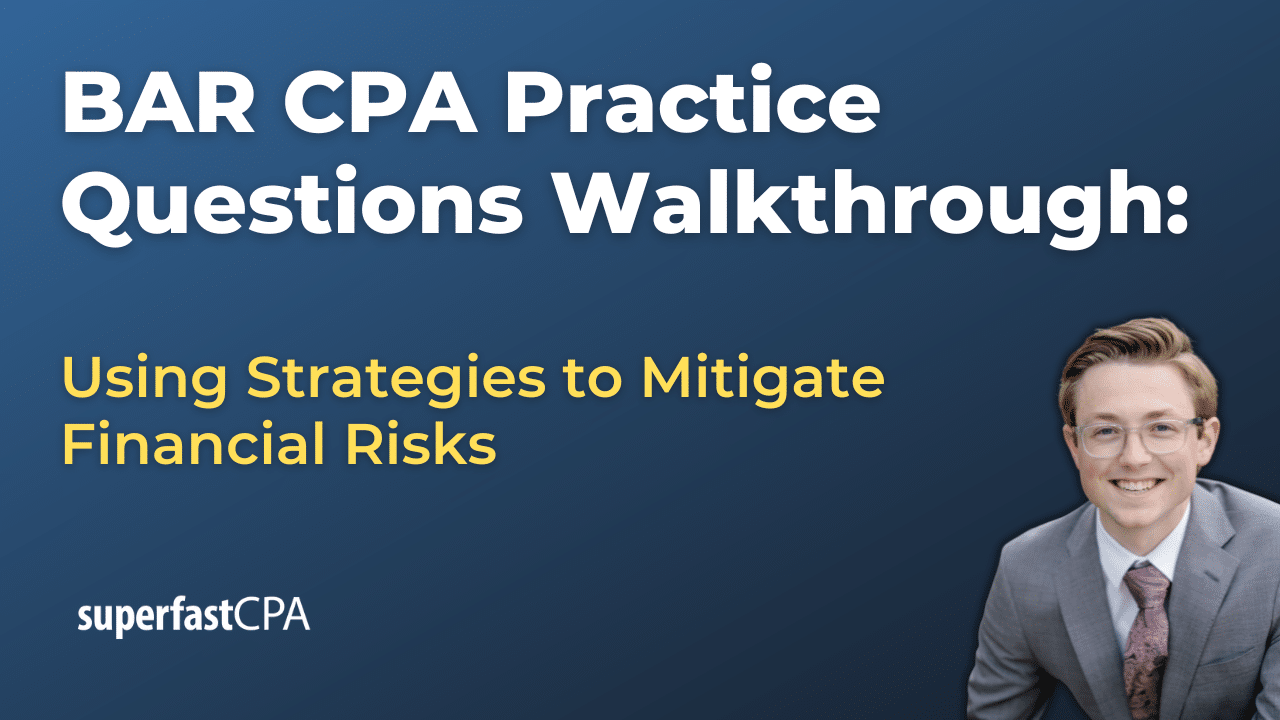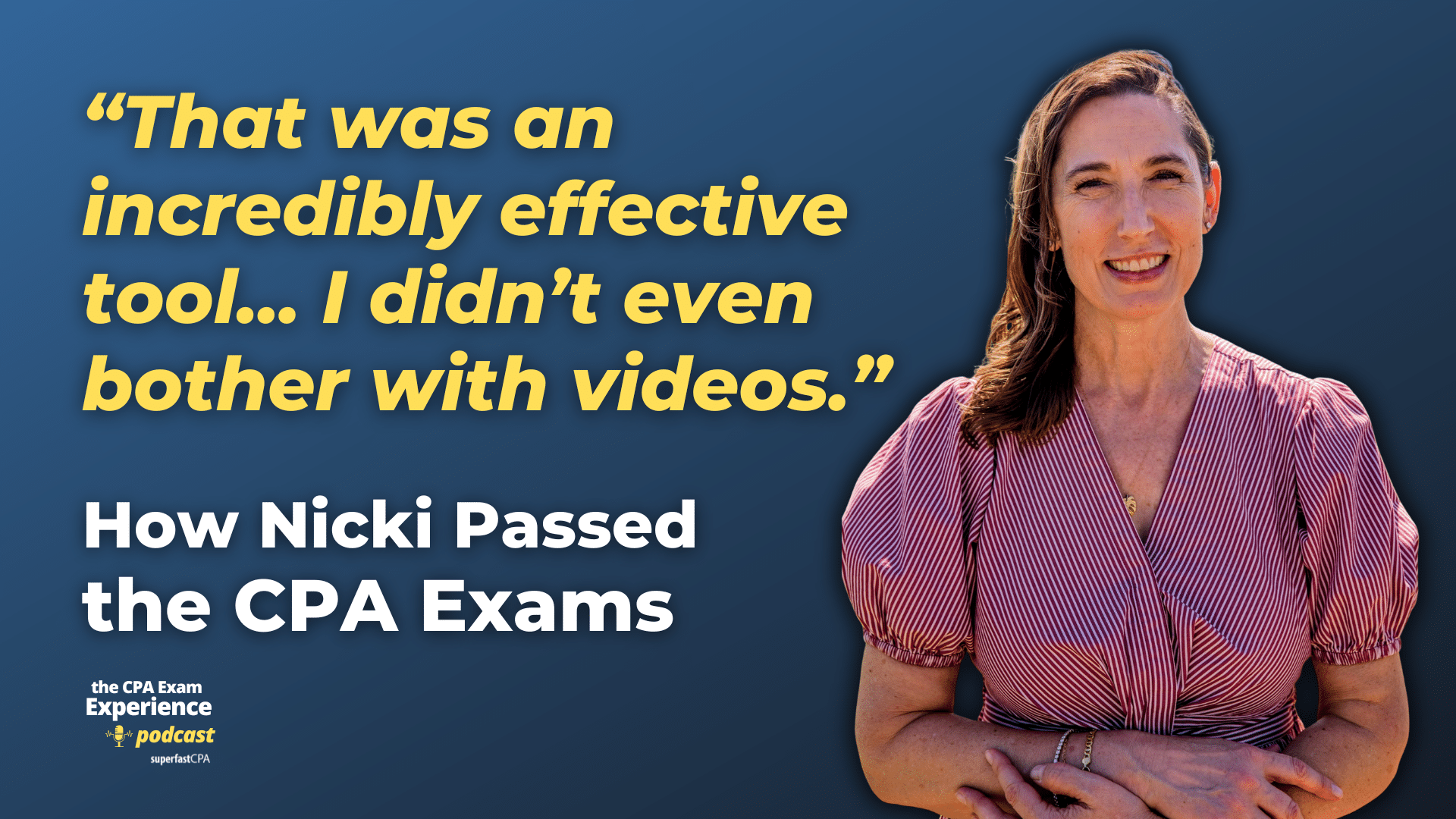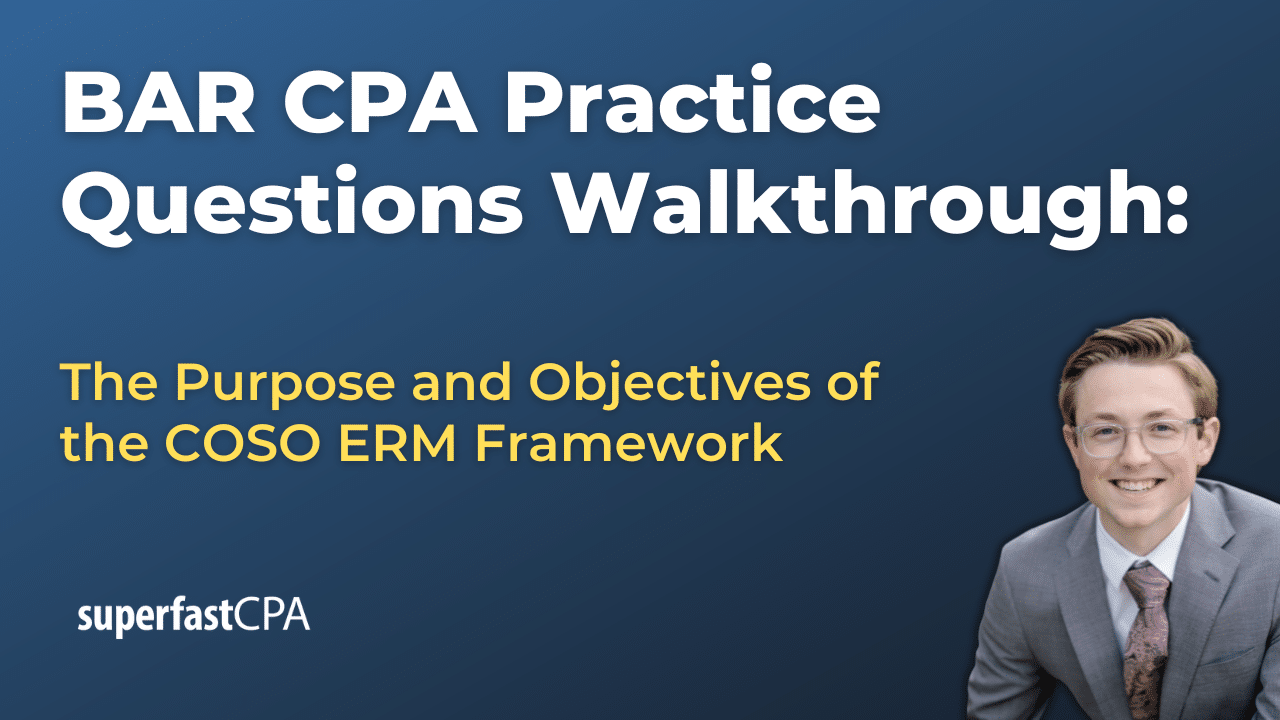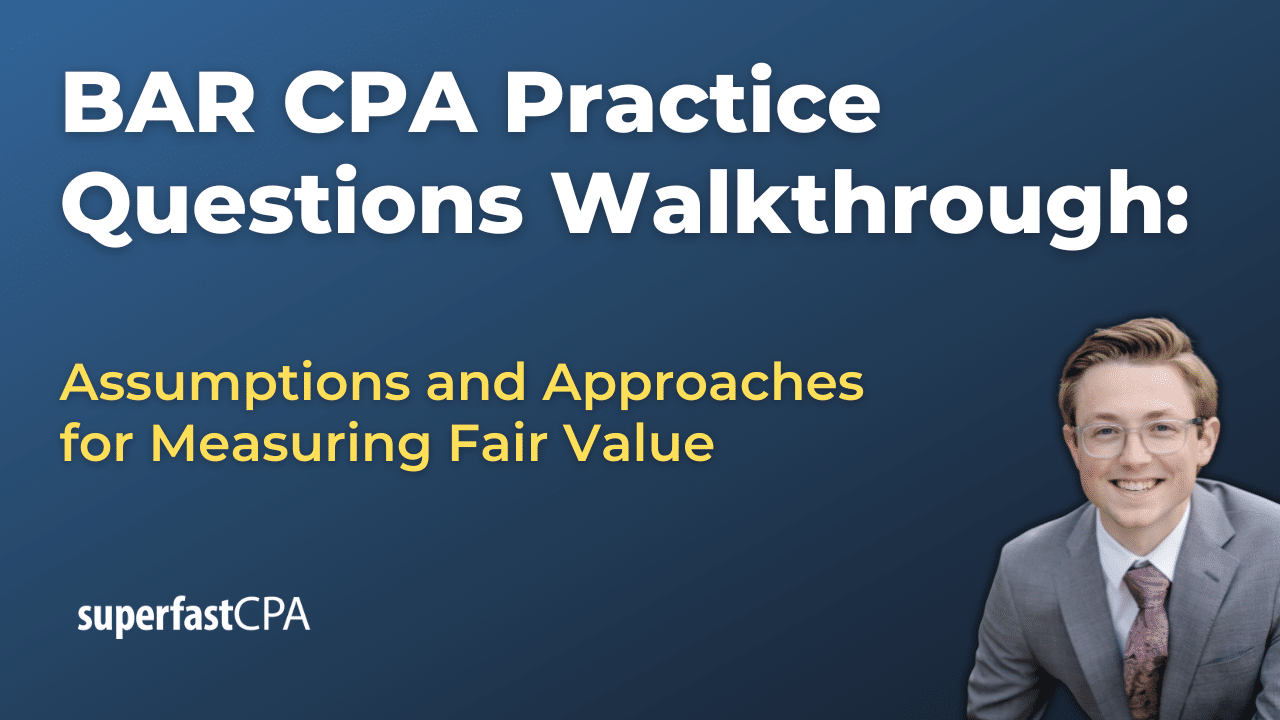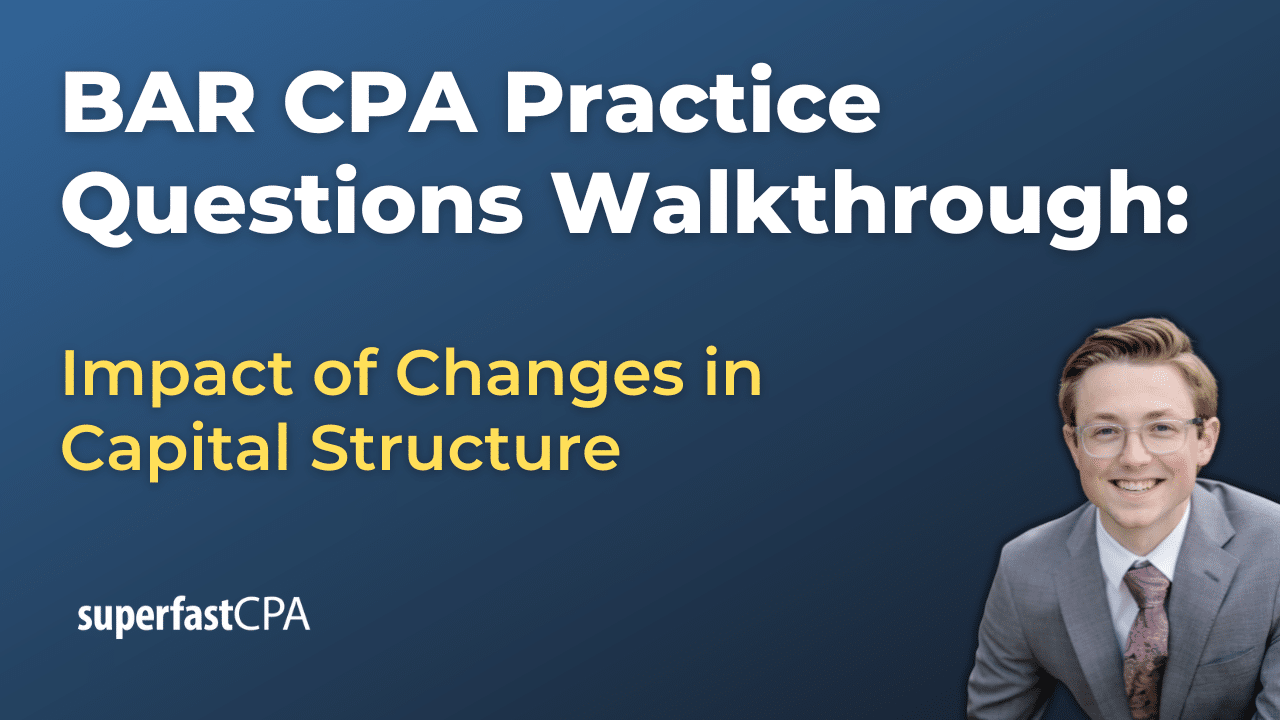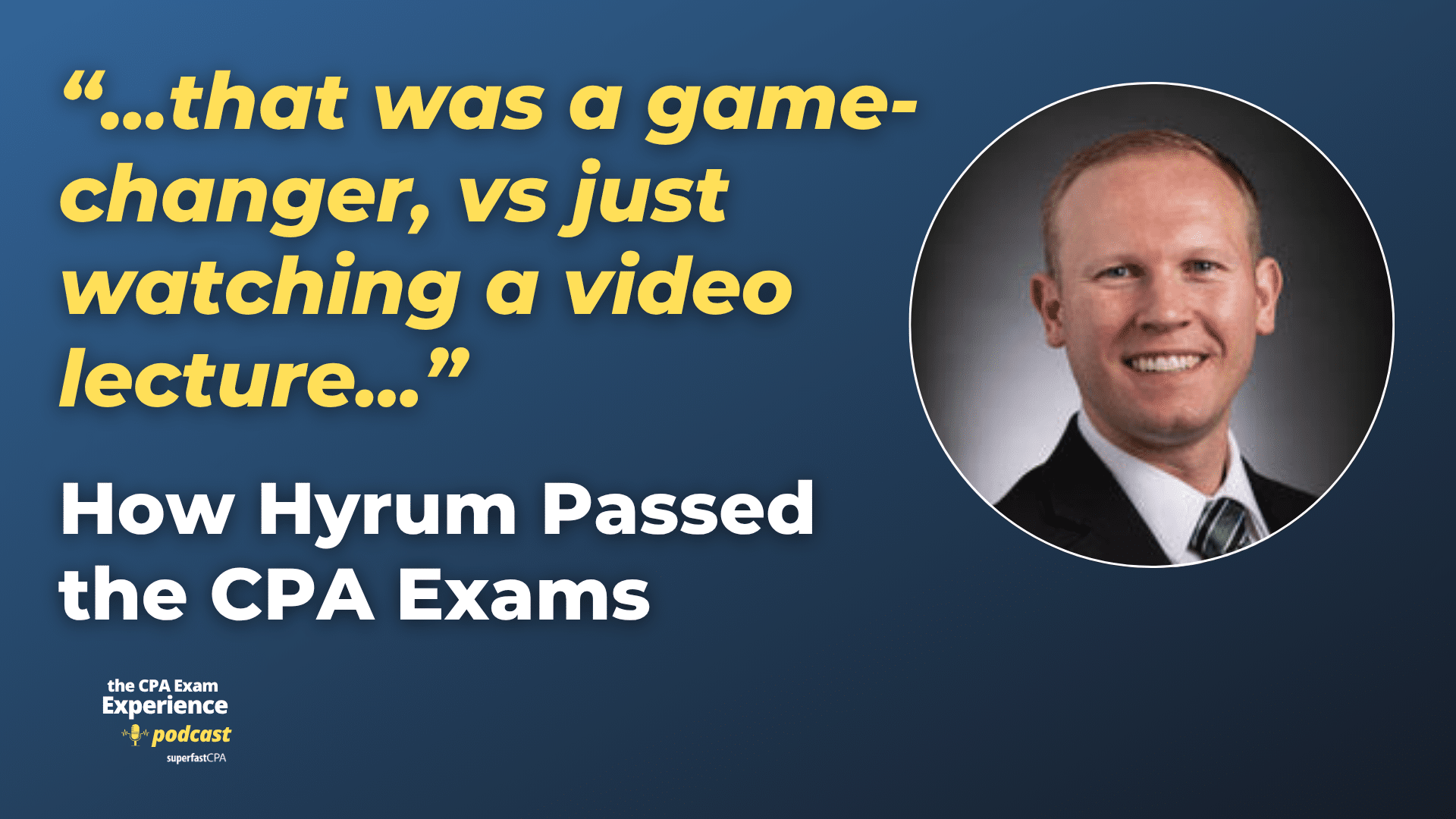In this video, we walk through 5 AUD practice questions teaching about performing procedures to identify related parties. These questions are from AUD content area 2 on the AICPA CPA exam blueprints: Assessing Risk and Developing a Planned Response.
The best way to use this video is to pause each time we get to a new question in the video, and then make your own attempt at the question before watching us go through it.
Also be sure to watch one of our free webinars on the 6 “key ingredients” to an extremely effective & efficient CPA study process here…
Performing Procedures to Identify Related Parties
Auditing related party transactions is critical because these transactions often lack the objectivity of arm’s length transactions and may pose a higher risk of material misstatement. The auditor must identify who the related parties are, assess the nature of transactions, and determine whether they are properly disclosed and accounted for. This process is particularly important when dealing with significant unusual transactions or transactions involving executive officers.
What Are Related Party Transactions?
A related party transaction occurs when a company engages in business with an entity or individual that has a pre-existing relationship with the company. This could include transactions with:
- Executives and board members
- Close family members of executives or board members
- Principal shareholders
- Entities under common control
For example, if a company sells equipment to its CFO at a discount or borrows money from a board member’s private firm, those transactions would be considered related party transactions.
In contrast, an arm’s length transaction happens between two independent parties with no special relationship—meaning they negotiate fair market terms just as they would with any other business partner.
Why Do Auditors Pay Special Attention to Related Party Transactions?
Related party transactions often raise concerns because:
- They might not be priced at fair market value, which can distort financial statements.
- They could be used to hide liabilities or inflate revenues, increasing fraud risk.
- They may not be properly disclosed, preventing stakeholders from understanding the true financial position of the company.
For example, if a company sells a warehouse to its CEO at a price significantly below market value with no clear payment terms, it could overstate income or understate assets, misleading investors and regulators.
Steps to Identify Related Party Transactions
Auditors follow a structured process to detect and assess related party transactions:
- Obtain a list of related parties from management and compare it with board minutes, shareholder records, and regulatory filings.
- Review contracts, invoices, and transaction details to identify any unusual pricing, terms, or conditions.
- Investigate year-end transactions that appear nonrecurring or unusual, which could indicate earnings management or hidden liabilities.
- Confirm transactions with external sources (e.g., bank confirmations, legal agreements) to validate their legitimacy.
Indicators of Related Party Transactions
Certain red flags suggest a transaction might involve a related party and warrant further investigation:
- Loans with no repayment schedule or at below-market interest rates
- Selling or purchasing assets at prices significantly different from fair market value
- Guarantees on loans or obligations for another party’s benefit
- Nonrecurring transactions happening near year-end
- Compensating balance arrangements maintained by or for another party
- Significant transactions with little or no documentation
For example, if a company borrows funds at an interest rate far below market levels from a business owned by a board member, it suggests a related party transaction that may not be at fair value.
How Related Party Transactions Affect Audit Opinions
When an auditor identifies a material discrepancy between management’s explanation and the documentation of a related party transaction, they must:
- Expand audit procedures to assess management’s reliability.
- Determine if the discrepancy results in a material misstatement in the financial statements.
- Modify the audit opinion if necessary—but not through an emphasis of matter or other-matter paragraph, as these are not used for misstatements.
If the misstatement is:
- Material but not pervasive, a qualified opinion may be appropriate.
- Material and pervasive, an adverse opinion should be issued.
For example, if a company fails to disclose a major loan guarantee for its CEO, and this omission could significantly mislead financial statement users, the auditor might issue a qualified or adverse opinion depending on its impact.
When Related Party Transactions Increase Risk of Material Misstatement
Not all related party transactions pose a high risk, but certain conditions increase the likelihood of misstatement:
- Unclear agreements or missing documentation
- Significant pricing deviations from market value
- Transactions structured to hide liabilities or inflate earnings
- Management’s failure to disclose relationships or details of the transactions
For example, if a company pays an executive’s relative for “consulting services” without clear documentation of the work performed, there’s a high risk that expenses are being overstated to shift funds inappropriately.
Conclusion
Auditors must go beyond simply identifying related party transactions—they need to analyze the financial impact, assess risk, and determine whether management has properly disclosed them. By carefully evaluating these transactions, auditors can prevent misleading financial reporting and maintain the integrity of the audit process.

